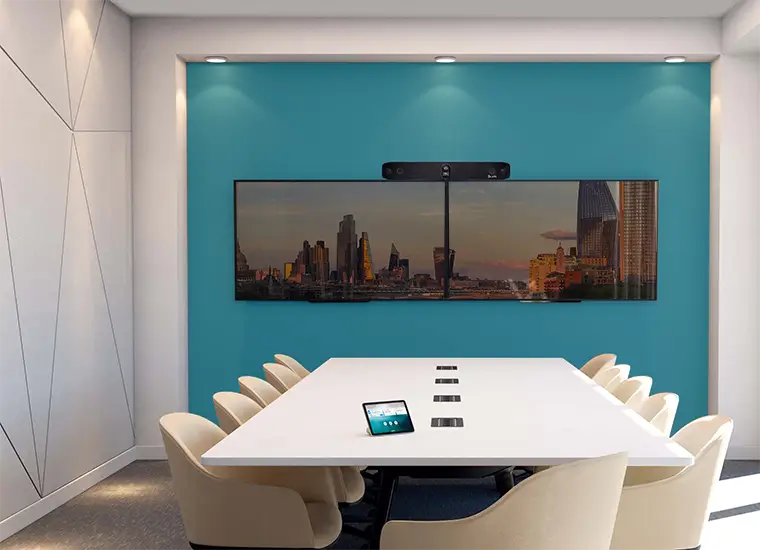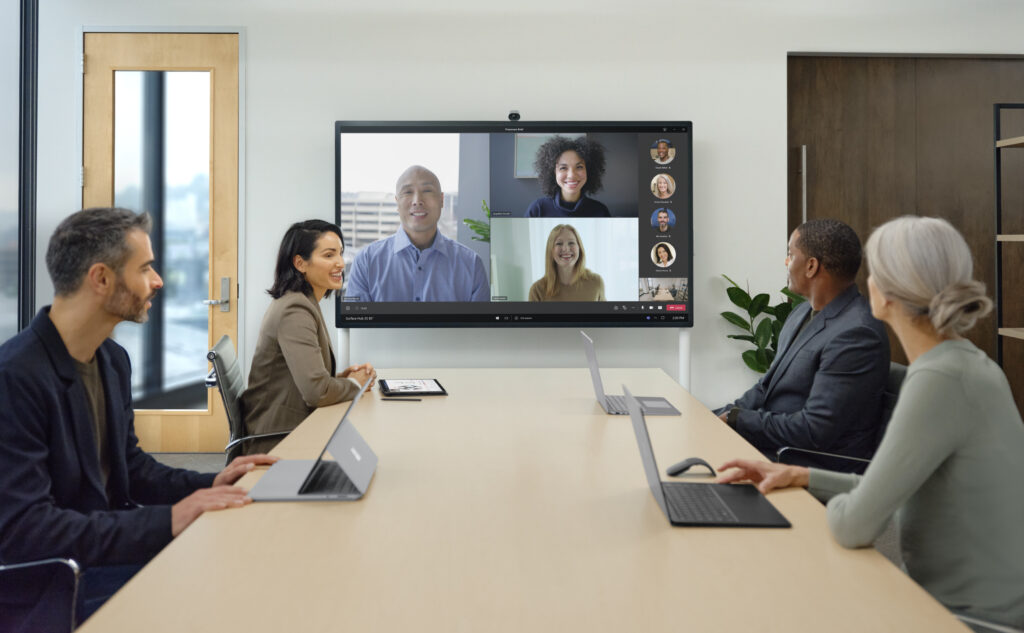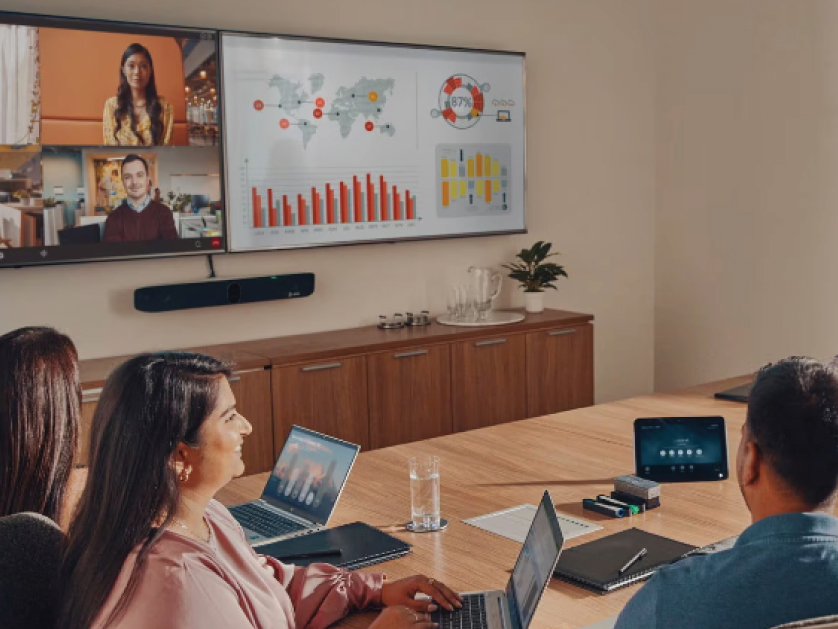Changing workspaces
Over the last two years the Covid pandemic has affected and influenced working cultures on a huge scale. Initially organisations scrambled to equip their employees with technology that enabled them to be productive whilst working from home thus helping drive a video-enabled meeting revolution. Many individuals embraced the improved work life balance, enjoyed more comfortable and attractive surroundings, and gained instant, unrestricted access to tools that improved their productivity and job satisfaction. The lifting of restrictions and an ability to gradually return to the workplace saw the emergence of Hybrid working, where employees divided their time between working at home and the office.
What does this mean for the traditional office?
As employers struggle with the challenges of retaining and recruiting talent into their business, ensuring employees are comfortable in their workplace is going to become more and more important, with many UK employees confident that they could easily find a new role if they decided to move company.
The challenge is to create workplaces that employees want to go to rather than need to go to. Providing attractive, comfortable, informal, flexible and highly effective workplaces will be critical to employee retention, recruitment and morale for the future.
Work patterns may have changed but the office remains a centre point for key decision making, collaboration and crucially for building a corporate identity and maintaining team morale.
The Destination Office
In simple terms a Destination Office is a location people want to go to, not one they have to. By creating an environment that encourages people to attend a physical workplace, it strengthens the value of the office real estate.
The look and feel of the office space should create a relaxed feeling, one that puts staff wellbeing at the centre of workplace design. The spaces need to reflect modern collaborative workflows and styles including collaboration, meeting, huddle, project, agile, scrum, group and personal video collaboration. Each space needs to be equipped with suitable furniture, decoration, lighting, acoustic conditioning and of course technology that empowers users.
Environments needs to be comfortable, inspiring, productive, effective, and available. Technology needs to intuitive, flexible and provide enhanced communication and collaboration capabilities beyond those available when working from home.
Destination Office technologies
Microsoft Team Rooms and Zoom Rooms
Employees returning to the workplace are looking for ways to use the same collaboration tools they have so successfully used at home, within the office environment. Powered by Microsoft and Zoom platforms, any meeting space can be transformed into a professional, feature-rich, video-enabled collaboration environment experience for all participants.
As a retrofit to an existing AV system or as a new installation, these certified solutions transform meeting spaces into highly effective collaboration and natural communication hubs.
Occupancy management systems
Crucially when employees attend the office, they need to know they have a space to work. Likewise, employers need to know if these spaces are used effectively, and which spaces are in most demand. Desk and room booking solutions allow staff to quickly reserve hot desks and meeting rooms easily. Centrally managed and monitored, these solutions allow workplace managers to accurately make decisions regarding future workplace design and utilisation.
Interactive collaboration screens
One of the biggest frustrations for home workers is the lack interactive collaboration between colleagues. Touch screen collaboration devices such as the Microsoft Surface Hub, Avocor and Clevertouch provide a large powerful canvas where colleagues work on content, plans and projects together. They provide an experience that cannot be replicated in the home office and actively create the opportunity for professional team interaction.
Content collaboration
Many users will want to use their own device in the meeting room, so spaces need to be designed to facilitate this. Solutions based around Bring your own device (BOYD) and bring your own meeting (BYOM) enable laptops to be used as effective, productive collaboration hubs in the meeting room.
With solutions such as the Barco clickshare conference, meeting participants simply click and connect wirelessly to in-room displays and videocollaboration devices. Using wireless content sharing positively transforms the user experience and productivity of any meeting space.
Immersive collaboration rooms
Using immersive, virtual reality technologies creates stimulating and visually stunning environments where users exist within their content as it is displayed around the entire room. Any content can be displayed with ease in these immersive space, creating an environment where meetings become more productive, training sessions become more stimulating, and ideas and designs come to life.
Visavvi, an SCC business
Visavvi are multi award-winning workplace technology experts and have over five decades of experience designing and implementing ingenious business collaboration environments. With global businesses and large public sector clients, Visavvi harness technology to create intuitive, agile meeting and collaboration environments that people love to use.



